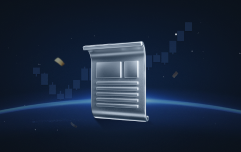5 Ways to Keep Your AI Assistant’s Knowledge Base Fresh Without Breaking The Bank
An outdated knowledge base is the quickest path towards inapplicable and incorrect responses in the sphere of AI assistants.
According to studies, it can be classified that a high portion of AI engineered responses could be influenced by stale or partial information, and in some cases over one in every three responses.
The value of an assistant, whether it is used to answer the customer questions, aid in research or drive the decision-making dashboards is conditioned on the speed it will be able to update the latest and most relevant data.
The dilemma is that the maintenance of information can prove to be technically intensive as well as costly. The retrieval-augmented generation systems, pipelines, and embeddings are proliferating at an accelerated rate and should be constantly updated, thus, multiplying expenditure when addressed inefficiently.
An example is reprocessing an entire dataset as opposed to the changes can waste computation, storage and bandwidth. Not only does stale data hamper accuracy, but it can also become the source of awful choices, missed chances, or a loss of user trust--issues that grow as usage spreads.
The silver lining is that this can be more sensibly and economically attacked. With an emphasis on incremental changes over time, enhancing retrieval and enforcing some form of low-value / high-value content filtering prior to taking into ingestion, it can be possible to achieve relevance and budget discipline.
The following are five effective ways of maintaining an AI assistant knowledge base without going overboard on expenses.
Pro Tip 1: Adopt Incremental Data Ingestion Instead of Full Reloads
One such trap is to reload a whole of the available data when inserting or editing. Such a full reload method is computationally inefficient, and it increases both the cost of storage and processing.
Rather, adopt incremental ingestion that determines and act upon new or changed data. Change data capture (CDC) or timestamped diffs will provide the freshness without having to spend almost all the time running the pipeline.
Pro Tip 2: Use On-Demand Embedding Updates for New Content
It is expensive and unnecessary to recompute the embeddings on your entire corpus. (rather selectively update runs of embedding generation of new or changed documents and leave old vectors alone).
To go even further, partition these updates into period tasks- e.g. 6-12 hours- such that GPU/compute are utilised ideally. It is a good fit with a vector databases such as Pinecone, Weaviate or Milvus.
Pro Tip 3: Implement Hybrid Storage for Archived Data
Not all knowledge is “hot.” Historical documents that are rarely queried don’t need to live in your high-performance vector store. You can move low-frequency, low-priority embeddings to cheaper storage tiers like object storage (S3, GCS) and only reload them into your vector index when needed. This hybrid model keeps operational costs low while preserving the ability to surface older insights on demand.
Pro Tip 4: Optimize RAG Retrieval Parameters
Retrieval of the knowledge base could be inefficient and consume compute time even with a perfectly updated knowledge base. Tuning such parameters as the number of documents retrieved (top-k) or tuning the similarity thresholds can reduce useless calls to the LLM without any detrimental impact on quality.
E.g. cutting top-k to 6 may keep the same power on answer accuracy but cut retrieval and token-use costs in the high teens. The optimizations are long-term because continuous A/B testing keeps your data up to date.
Pro Tip 5: Automate Quality Checks Before Data Goes Live
A newly provided knowledge base would not be of use unless the content is of poor quality or does not conform. Implement fast validation pipelines that ensure there is no duplication of nodes, broken links, out of date references and any irrelevant information before ingestion. This preset filtering avoids the needless expense of embedding information that never belonged there in the first place--and it makes the answers more reliable.
Final Thoughts
It is not necessary to feel that you are fueling a bottomless money pit trying to keep the knowledge base of your AI assistant updated. A variety of thoughtful behaviours can maintain things correct, responsive and cost-effective, such as piecemeal ingestion, partial updating of embeds, mixed storage, optimised retrieval, and intelligent quality assurance.
Think of it like grocery shopping: you don’t need to buy everything in the store every week, just the items that are running low. Your AI doesn’t need a full “brain transplant” every time—it just needs a top-up in the right places. Focus your resources where they matter most, and you’ll be paying for freshness and relevance, not expensive overkill.
\ \
You May Also Like

Ethereum unveils roadmap focusing on scaling, interoperability, and security at Japan Dev Conference

Two wallet addresses respectively raised tens of millions of dollars in SOL and BTC.

